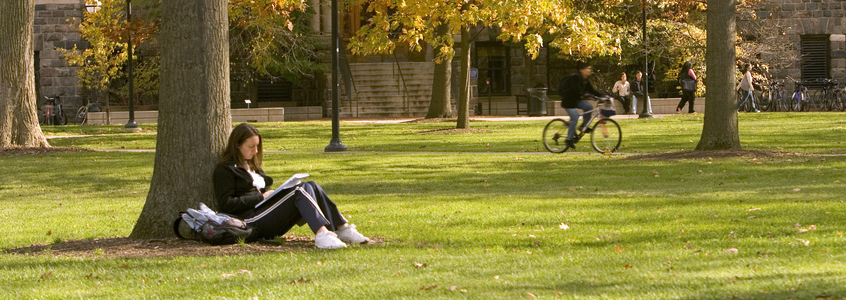
Transforming Rural Student Success with StudentTracker
How United Way Muscatine County Is Helping Improve Student Outcomes
United Way Muscatine County in eastern Iowa leverages the National Student Clearinghouse’s Student Tracker for High Schools to gain valuable insights into the educational and career pathways of local students. Their innovative use of StudentTracker, which involves collaborating with local high schools and districts, businesses, and the military, offers a compelling model for other rural communities seeking to enhance student outcomes and workforce readiness.
StudentTracker is the only nationwide resource that enables organizations to track students as they enroll in higher education, take breaks from college, transfer institutions, and graduate. By following these diverse pathways, schools and community partners can better understand long-term outcomes and make data-informed decisions to support student success.
Aligned Impact Muscatine County (AIM) is an education initiative of United Way Muscatine County focused on closing achievement gaps and improving outcomes for students and families across the region. One of AIM’s core goals is to ensure that every student who graduates from high school is ready to pursue postsecondary education or career training. In this interview, AIM Data Manager Mindy Hoon shares the instrumental role StudentTracker plays in achieving this goal. The Clearinghouse recently met with Mindy to learn how she and her colleagues are using StudentTracker data.
Why is it important to understand the pathways students are taking to postsecondary education and/or the workforce?
High school graduation rates in our region declined following the COVID-19 pandemic, but recent data shows a promising upward trend. As we continue to support student success, we’re asking important questions: How are career-focused pathways in high school influencing students’ postsecondary choices? Are students earning certificates and heading straight into the workforce? Are they using these programs as stepping stones to internships or work-based learning experiences, or are they continuing on to college or advanced training? Understanding these patterns is key to shaping programs that truly prepare students for life after high school graduation.
How does StudentTracker support AIM in understanding and improving student pathways from high school to college or career?
We use StudentTracker to track postsecondary outcomes for local students. After submitting our data, we receive detailed reports that allow us to align and analyze student trajectories. Right now, our focus is on understanding what happens to students who don’t appear in postsecondary education records. Where are they going?
To answer that, we partnered with three major local employers in our highly industrialized community. These businesses help us cross-reference student names with employment records to identify those who may have entered the workforce directly. The high schools are fully supportive, and the employers have enthusiastically joined the mission. We are also collaborating with the military, which has provided data on students who’ve enlisted and are now on military career tracks.
It’s exciting to see this level of community engagement. We’re essentially mapping out the full spectrum of student pathways from graduation to career, and it’s all possible because of a community that deeply cares about its youth and our use of the Clearinghouse’s StudentTracker service.
How do you turn insights from StudentTracker data into meaningful actions that improve student outcomes?
We work closely with local schools and bring a wide range of voices to the table, including high school administrators, postsecondary registrars, high school students, college students, and even the president of the community college. This diverse group helps us look holistically at student outcomes. For example, when one district noticed a drop in student engagement, it sparked a deeper conversation: Were students heading straight into the workforce? Were they continuing their education? These insights help us celebrate successes and identify areas for growth.
One standout program is Spark, our summer initiative for elementary students. Spark brings together community partners — from conservationists to police officers — to offer hands-on learning experiences alongside core academics like reading. It’s designed to expose students to new opportunities and inspire future pathways. Ultimately, our goal is to respond to what we see in our community and provide programs that meet students where they are and help them move forward.
Can you share examples of insights you gleaned from StudentTracker?
Using StudentTracker, we’ve been able to explore how dual enrollment and career-focused programs are shaping students’ postsecondary outcomes. [Dual enrollment is one of the new on-demand reports available in StudentTracker 3.0.] One exciting development came from a local superintendent who had a light bulb moment: Why aren’t we using career academies to support students who struggle in traditional high school settings? These students may not thrive in a typical classroom, but they’re passionate about fields like automotive technology or welding.
This insight led to a meaningful collaboration between the high school and the local college. Together, they began exploring how to create pathways that allow these students to pursue hands-on training while still in high school, giving them a clear route to a career they care about. By connecting these dots, we’re helping students graduate with purpose and direction, ready to enter the workforce or continue their education in a field they’re excited about.
In another instance, a community grant provider reached out with an important question: Could we help identify students who earned scholarships or awards but never claimed them? Using StudentTracker, we matched those students to postsecondary enrollment records to see if they had continued their education or if their plans had changed. Due to this collaboration, the grant coordinator was able to reconnect with several students and help them access the funding they had earned. She’s already seen success, and I’m eager to follow up and learn just how much support has been distributed because of this effort.
Understanding StudentTracker’s Community Impact
At the end of the interview, Hoon reflected on StudentTracker’s impact on her community, “These results are a testament to all the hard work that’s gone into collecting, organizing, and connecting our student data to the postsecondary landscape. Through StudentTracker, we’ve been able to turn raw data into meaningful insights that help us support students more effectively, build stronger partnerships, and open doors to new opportunities. It’s a reflection of what’s possible when a community comes together with a shared vision for student success.”
Additional Resources:
StudentTracker users: Outsource your diploma verifications for free
Participating in both StudentTracker and DiplomaVerify is the best way for high schools and districts to maximize the value of their student data — for themselves and their students.
Take a deep dive into the latest learner insights
Explore our free and timely research reports and interactive dashboards for insights into higher education trends.



